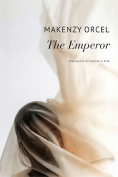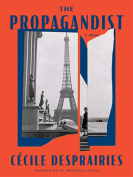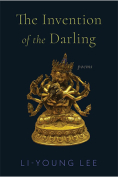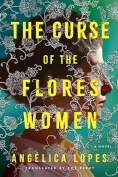The Club of True Creators by Milan Tripković
 Brooklyn. Rossum Press. 2023. 194 pages.
Brooklyn. Rossum Press. 2023. 194 pages.
Shortlisted for the NIN literary award, among Serbia’s most prestigious, Milan Tripković’s postmodern mock-heroic skewers the corruption, violence, and toxic masculinity of Serbian culture and politics. Ironic and carnivalesque (per Bakhtin via Rabelais), with hapless heroes and bumbling villains, the book highlights ideological splits within Serbia: an Old Guard that seeks to preserve the “glorious past” by whitewashing history and silencing dissidents; an educated elite that embraces Western culture and politics; those artists who defend the “traditional standards” of classic Serbian literature, the old morality, and isolation from corrupt Western forms.
Its quirky narrative voice, “we” (the Serbian first-person plural, mi), speaks for a motley group of Serbs, some of whom who react to events or comment independently. This “we” mediates all spectacles for the reader, no matter how unsavory (e.g., violence, pornography) and likewise directs plot transitions. Thus, for example, when preparing to join the four Club of the True Creators members in Voja Počuča’s car as he kidnaps Maja Trnavaċ (a literary critic whose failure to recognize the mad quartet insults especially Voja), “we” remarks that “the omnipotence of literature allows us to pause this scene and escape to a more spacious one in the next chapter.”
Three additional groups pervade the text: Serbia’s secret service—the BIA—latter-day Keystone Cops who break laws to “maintain order”; the somewhat smug literati, who try through art and human rights activism to expand public awareness of the “Banana Republic” Serbia has become; and the Club of the True Creators, four Stooges led by Voja, underachieving clowns and self-proclaimed “literary icons.” Denouncing the literati as “sellouts to the West,” “Pharisees of PC,” and “tramplers of freedom,” they provoke the police as they battle “the forces of imperial subjugation . . . the mercenaries of NGOs, and . . . false artists chasing frivolous Euro funds and approval.” These groups collide in hilarious ways as the plot bounces from Novi Sad, near Belgrade (“the Athens of Serbia”), through Serbia to Kosovo in thirty-five sections of varied lengths (the shortest a paragraph) and an epilogue with its own epilogue.
Mistakes and misconceptions drive events. Voja, whom “we,” tongue firmly in cheek, first calls “our protagonist,” then “our hero,” emerges as an egocentric, foolish windbag. When Rajko Pešut, a BIA goon/war criminal, accosts him in a bar, mistaking him for some buddy with whom he committed dastardly deeds in Bosnia, gullible Voja drinks with him, wondering if, perhaps, they had met before. But as they move outside, the well-known human rights activist Nataša Žarković runs over Rajko deliberately—to teach him that his crimes are not forgotten. Voja flees, believing himself her intended victim, and as he worries that Nataša plans to “assassinate” him, she fears that she has inadvertently killed Rajko.
The plot thickens in twists and turns. Thus, for example, Maja’s abduction endangers the Club when she escapes into a cornfield while supposedly urinating. Charged with watching out for, without “watching,” her, Voja forgets his task as he rants against the cultural crimes of the elite. When finally remembering his captive, he sees that Maja has vanished.
Elsewhere, a rom-com begins when the handsome, much married, but currently single Inspector Milonja Šoškić encounters Nataša, weeping as the BIA grill her about the attack on their buddy. Captivated, Milonja whisks her from the room, drives her to her home, tells her to pack a few things, and vows to keep her safe. Minutes later, she reenters the car with a giant suitcase and three dogs, a repeated source of humor. Thus, for example, a stop for gas and coffee becomes a shaggy-dog story when one poor creature’s long-held-in deposit ruins an angry man’s name-brand shoe. A fight looming, “we” exits that chapter for the next, and later the reader spots Milonja’s bloody nose. Then, as the pair flee Serbia for a Kosovan monastery headed by Milonja’s old pal Stevo, a not-quite-kosher monk, romance blossoms.
A word about AI, Club’s unexpected translator. Since Tripković deliberately disrupts literary forms and genres here, readers will likely accept the occasional awkward colloquialism, wordiness, or odd figure of speech as part of its scaffolding. Approximating his Serbian, brisk pace, and ironies, the translation preserves the flavor of this irreverent romp.
Packed with references to Serbian history and pop culture as well as Western art and media (from Shakespeare to Tarantino), The Club of the True Creators shares the whimsy of a Wes Anderson film. Its artificial universe parallels our own. The “we” gentles its violence, sweetens its romance, and underscores its ironies, while supplying the proverbial comedic happy ending—the two epilogues inform us that a court found Rajko guilty of war crimes, Milonja and Nataša wed at Stevo’s monastery, and the True Creators were jailed for kidnapping Maja. Indeed, this zany burlesque hits all its targets; no wonder my Serbian friends feel such despair.
Michele Levy
North Carolina A&T State University






























